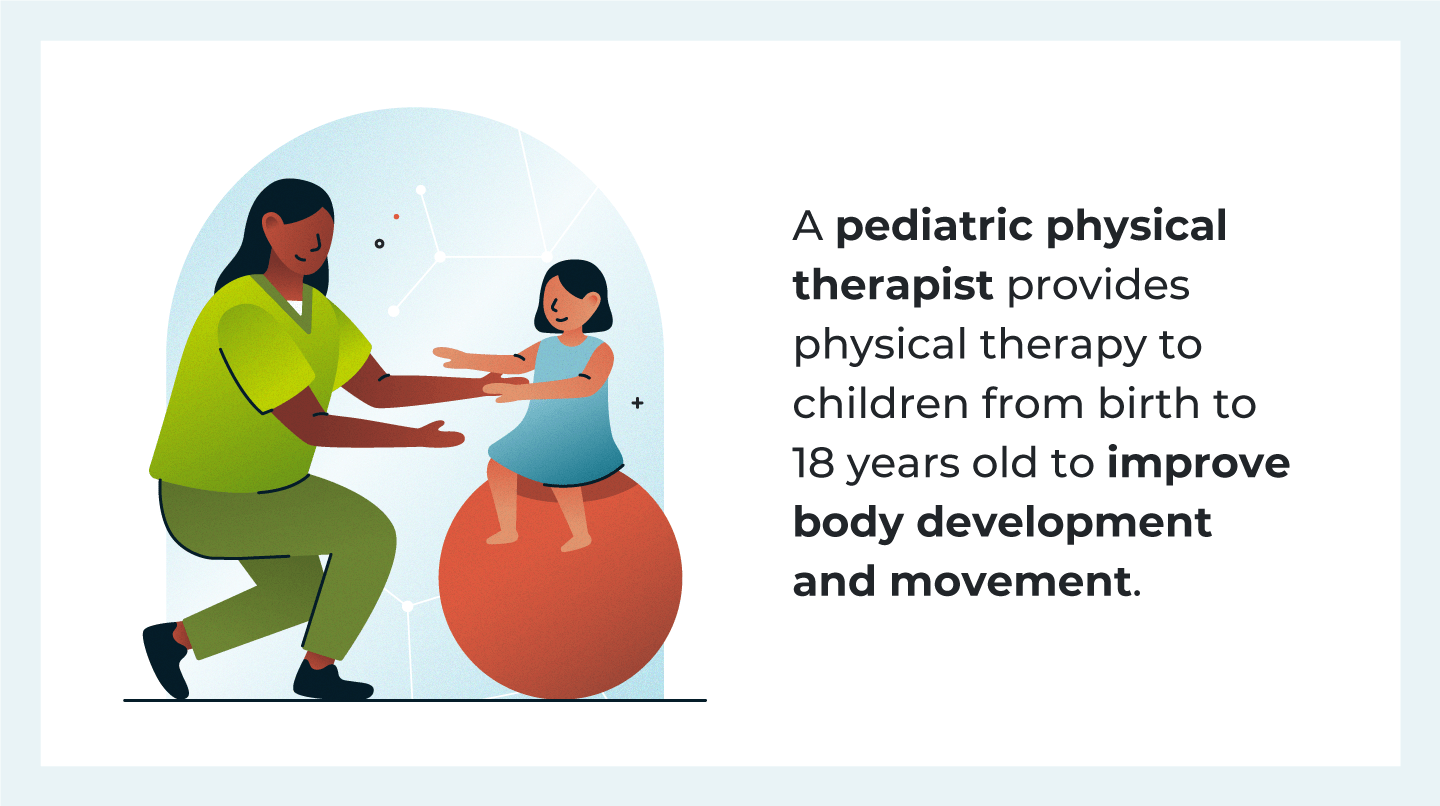Physiotherapy in Pediatrics is a specialized area of physiotherapy that focuses on the assessment, diagnosis, and treatment of children with various developmental, neurological, and musculoskeletal conditions.
Pediatric physiotherapists work with children from infancy through adolescence to improve their physical abilities, optimize movement patterns, and enhance their overall quality of life.
| Aspect | Details |
|---|---|
| Scope of Practice | Pediatric physiotherapists treat conditions such as developmental delays, neuromotor problems, orthopedic issues, and respiratory conditions. |
| Treatment Settings | Treatment can occur in hospitals, rehabilitation centers, outpatient clinics, and even at home. |
| Goals of Treatment | Focus on improving strength, endurance, mobility, and participation in daily activities. |
| Common Techniques | Use of therapeutic exercises, manual therapy, gait training, and respiratory exercises. |
| Family Involvement | Treatment plans often involve collaboration with families and other healthcare professionals. |
Pediatric Physiotherapy Courses
There are several educational paths to becoming a pediatric physiotherapist:
-
- Bachelor of Physiotherapy (BPT): An undergraduate degree in physiotherapy.
- Master of Physiotherapy (MPT) in Pediatrics: A postgraduate degree specializing in pediatric physiotherapy.
- Doctor of Physiotherapy (DPT): A professional doctoral degree in physiotherapy.
- Certifications and Specializations: Additional certifications in pediatric physiotherapy can enhance skills and knowledge.
Five Steps to Becoming a Pediatric Physical Therapist
Degree Doctorate Field of study Physical Therapy Licensure National Physical Therapy Examination (IAPA) administered by the Federation State Boards of Physical Therapy (FSBPT) Specialization Pediatrics Median salary (2023) 1.0 LPA to 7 LPA Job outlook (2022-2032) 15% projected growth Number of jobs (2024) 240,800 
Interview with a Physiotherapy student: Hear about their experiences and aspirations
Types of Pediatric Physiotherapy

Pediatric physiotherapy can be categorized into several types, each addressing different needs:
- Neurological Physiotherapy: Focuses on conditions affecting the nervous system, such as cerebral palsy and developmental coordination disorder.
- Respiratory Physiotherapy: Deals with conditions affecting breathing, like cystic fibrosis.
- Developmental Physiotherapy: Helps children with developmental delays and motor skill issues.
- Learning Difficulties Physiotherapy: Assists children with learning difficulties that impact their physical abilities.
- Musculoskeletal Physiotherapy: Addresses issues related to bones, muscles, and joints, such as juvenile arthritis and scoliosis.
Pediatric physiotherapy is not just about exercises; it’s about empowering children to reach their full potential and ensuring they can participate fully in daily activities. If you have any specific questions or need more information, feel free to ask!
Related Articles
- Autism-Friendly Home
- BPT Admission
- Baslp & BPT entrance-exam
- BPT Graduates
- BPT Course
- BPT Course 2024
1. How long does it take to become a pediatric physiotherapist?
It typically takes 5–7 years, including a bachelor’s degree and clinical experience.
2. Do I need a specialization to work in pediatrics?
While not mandatory, specializing in pediatric physiotherapy enhances your knowledge and career prospects.
3. Can pediatric physiotherapists work independently?
Yes, many professionals establish private practices to provide personalized care.
